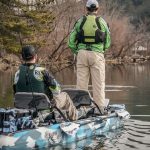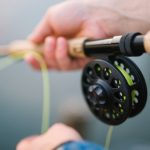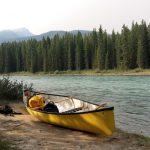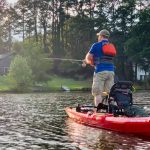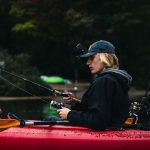Whether you want to go fishing with a friend, teach your kid fishing, or just have a great time on the water with your partner, a tandem fishing kayak is often better than two separate kayaks.
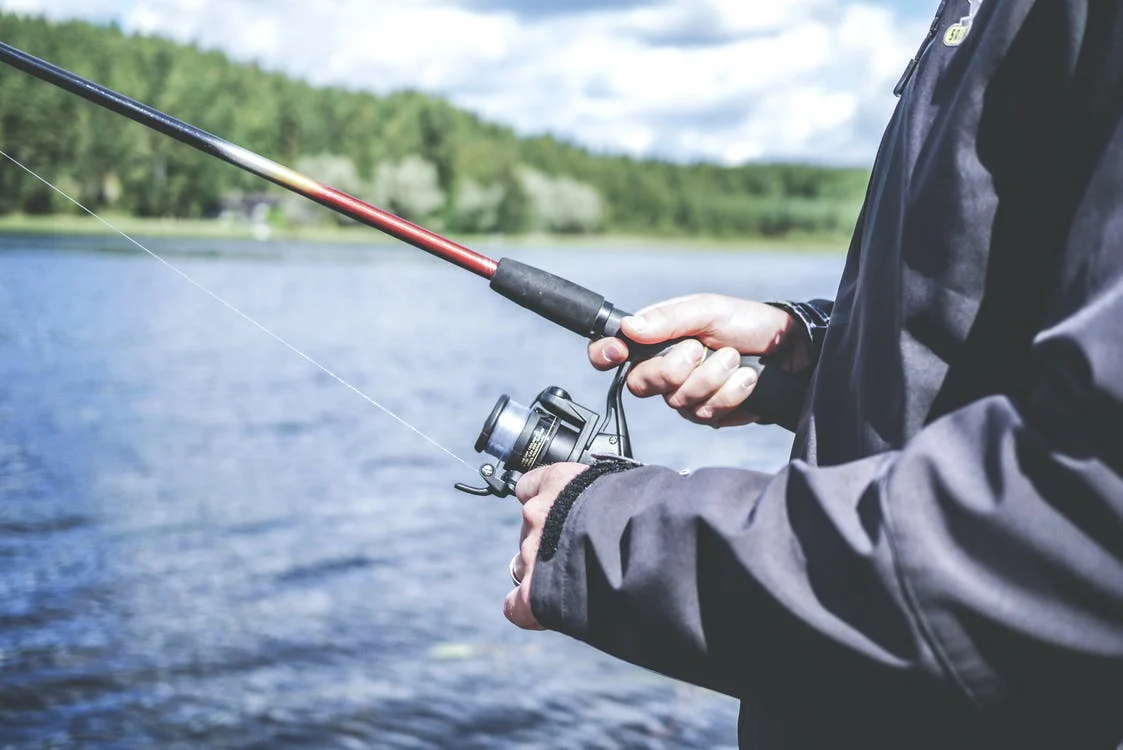
Fishing is a great way to spend time and bond with your family. Some people assume that fishing is easy, but without the basic knowledge, you’ll get frustrated trying to hook your bait or reel in your baited fish. Fortunately, this guide is to help you in your fishing journey.
First, you must ensure that you have the right fishing gear and baits and can successfully tie the knot and hook the bait before setting off to the river. You must also know when it’s the best time to fish and where to fish. If you have no clue, you can consider hiring a fishing guide.
Essential Fishing Tools
Every person looking to start fishing must ensure they have the right fishing gear and baits to kick start their fishing journey. These include:
License
Before starting fishing, you must apply for a permit or license. You might wonder where to buy a fishing license near me? You can easily apply online or buy from your local fishing shop. The state’s wildlife department issues the permits, and there are freshwater and saltwater licenses.
The day licenses are not expensive; they are usually less than $20, but the cost will vary depending on the state and your residency status. However, if you plan on making fishing a hobby, it’s better to get an annual license with costs between $30 and $250.
Rods and reels
When starting, you don’t need expensive gear; you just need a light spinning reel and rod. The lightness will make it easy for you to cast. However, you must ensure that your catches are not heavy as they may overwhelm you, so focus on small fish such as bass or trout.
It is ideal for freshwater and saltwater. And once you have mastered the art of fishing, you can upgrade your fishing reel and rod.
Types of rod reels and rods
- Spinning reels and rods
- Baitcasting rods and reels
- Spincast
- Fly
- Surf
- Trolling
Lines and baits
The lines and bait you will use depend on the fish you intend to catch and the type of water. This is because the bait used for fresh water is not the same as that for saltwater.
Visit your local fish shop, which recommends the best live bait in particular areas. Alternatively, you can catch your bait, such as worms and insects, and hook them. If you are fishing in saltwater, consider using shrimp or shellfish.
There are also artificial lures sold at the fish shops; the best part is you can reuse them.
There are three types of fishing lines, and they include:
Monofilament: It’s the most popular fishing line as it is affordable and versatile. This line is resistant to abrasion and ideal for freshwater and saltwater fishing.
Fluorocarbon: It is ideal for fishing in clear water as it becomes almost invisible in water, so fish will only see the bait, making it easy for fish to bite.
Braided: This line is ideal for heavy fishing fish as it has enhanced strength. However, it is more visible in the water, making getting a bite quite challenging.
Hooks, Sinkers, and Bobbers
Now that you have your spinning reel and rod, it’s time to attach the hook and sinkers. The hook is used to catch the fish as they bite the bait. The sinker is a weight that helps pull down your lure into the deep parts of the lake or river where the fish are.
Types of bait to use
- Worms, grubs, waxworms, crickets, and mealworms are great for catching panfish.
- Sweet corn, bread, and doughballs are ideal for catching Carp.
- Cured fish roe and cut herring for catching salmon
Other baits include insects, minnows, nightcrawlers, crayfish, eel, chicken livers, chad, and cut bait.
Alternatively, you can use soft bait called lures, made of synthetic material that emulates the live bait and attracts fish. It is supple and rubbery, making it pliable and long-lasting. You attach it to the hook as typical bait, and the best part is you can reuse it as many times as possible.
The lures vary depending on the fish you aim to catch, water condition, and the weather. In instances where there are strong currents and windy, the heavy lure is perfect, and the light lure when the weather is calm. A colored lure is ideal when the water is muddy as it will attract fish from a distance.
Types of lures include:
- Spinnerbait
- Crawfish
- Crankbaits
- Jigs
- Topwater lures
- Jerkbaits
Fishing Clothes
You must have suitable clothing for fishing, lightweight trousers, and long-sleeved t-shirts.
Pliers
They are essential for removing the barb from the fish’s mouth. But if your finances are tight, they are unnecessary as you can gently remove them with your bare hands.
Polarized glasses
They are essential as they protect your eyes from the sun and the glare reflected on the water. They also help you see the fish in the water, making it easy to cast in the direction of the fish and successfully get a bite.
Kayak
If you are not fishing from the shores, a kayak would be a good addition as it gives access to the open waters. This gives you freedom when casting and catching a whole load of fish.
GPS
If you don’t have a fishing guide, a GPS is a must-have as you don’t want to get lost in the open waters. It will also help you navigate the waters to get to the location where the kind of fish you want can be found.
When is the Best Time to go fishing?
The type of fish you intend to catch and the season determines the time you set off for fishing. For instance, during spring, it’s best to go fishing from the late afternoon to evening. This is because the water is too cool in the morning, so the fish will be in hiding till later in the day when the water is warm.
During summer, early mornings and late evenings are best because there will be plenty of bugs during the day. Besides, the sun will be too hot to enjoy fishing. However, if you want to catch bass, nighttime is the best as they enjoy the cooler water and a quiet environment.
Fall is more like spring, where the weather is cool in the mornings, making it ideal to go fishing from late afternoon to early evening. You are likelier to catch more fish as they tend to feed more as they store food for winter.
The weather is cold during winter, and it’s pretty hard to get any fish as they are in hibernation to preserve energy.
Now that you have all the essential gear, fishing license, clothing, baits, and lures, it’s time to set off for your fishing expedition.
Fishing for Beginners
You first need to learn how to attach the hook to your fishing line, which requires you to tie a knot.
Knots
There are different types of knots to use, with the most common ones being:
The clinch knot: This knot is used on most hooks. The knot is strong and ideal for fighting fish. However, it may not be the best knot for a heavy line as the knot tends to be small and tight. It is ideal for attaching hooks and artificial lures.
The Palomar Knot: This knot attaches most hooks to the fishing line. The knot is pretty easy to tie and comes out strong.
The Double surgeon’s knot: This knot is suitable when you want to attach a leader to a fishing line. Thus, it is ideal for when you want two lines, braided and fluorocarbon fishing lines.
Attach the Bait
After attaching the hook, you need to hook your bait. If you are using a worm, make sure to pierce its body with the hook in several places, the ways you do needlework. This reduces the chances of slipping off and gives you time to reel in your fish as it bites on the bait.
Reading Water
This is a superb skill to have as you will be in a position to know where the fish are to get a great target. For instance, you don’t need to use a kayak to access open water as the fish hide around weeds and close to the shores of the lake. However, it is better to fish in some lakes in the open water; look for places that offer them good cover, such as overhanging banks.
Casting
Now that you have attached your hooks and bait and know where the fish are hiding, it’s time to cast. It’s a simple action where you cast your line, just like you’d throw a baseball.
Using a spinning reel, open the bail and allow your line to feed out, but ensure that your index finger is on the line while holding the rod. And as you cast, remove your finger from the line to let go as far as possible, and when the bait hits the water, close the bail and stay ready to reel in once a fish bites on the bait.
Hooking
Once you’ve cast your lure, your next step is to stop the fish from spitting out your bait once it bites. Or the weight of the fish overwhelming your line to the point it breaks.
So you must ensure that the hooks pierce the fish the instant it bites on the lure. You must set the hook in the fish’s mouth by jerking your rod upwards. This ensures that the hook is stuck in the upper part of the mouth. Upon hooking, your fish will start fighting. Ensure it’s well connected, then let it fight until it’s tired. Then, it would be best to begin slowly reeling in your fish. Don’t do it faster, as you risk ripping the upper part apart.
Pull your rod up such that the tip points upwards and continues reeling.
Landing
Once you remove it from the water, avoid placing it on the ground. If you have a net, that would be the ideal place to put it. Remove the hook gently without harming the fish by pushing down on it, twisting it slightly, and then removing it.
If you plan on returning it to the water, don’t let it stay outside too long, and handle it carefully to avoid causing damage.
Storage
If you plan on having your catch for lunch or dinner, you can store it in a cooler box filled with ice. Place it in a swimming position and cover it with ice.
Final Thoughts
Fishing is best enjoyed with company. So, why don’t you get your family out on the lake this weekend and have fun as you fish? Follow this beginner fishing guide, and you’ll soon be an expert angler.

